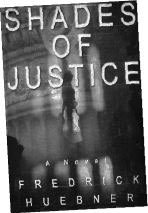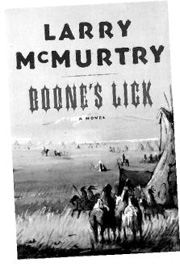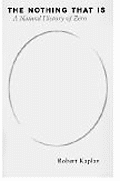In 1899, 10 years after its devastating downtown fire and 10 years before its first world’s fair, Seattle was proud of itself. Maybe too damn proud. Grown rich and populous from the recent Klondike Gold Rush, it was a town filled with blustering boosters. There was no Seattle Weekly around then to annually recap local foibles or eccentric episodes. But had there been, these are some of the subjects it might have felt moved to comment on that year:
Best technological development
On July 31, 1899, the world’s first underground hydroelectric plant went online at Snoqualmie Falls, finally delivering a reliable feed of power to Seattle, Tacoma, and surrounding communities. In a move that touched the hearts of newspapermen covering the event, plant builder Charles Baker let his 18-month-old daughter throw the switch that got the generators going. That plant still supplies power to light 16,000 homes.
Best businesswoman
She arrived in Seattle shortly before the city’s Great Fire of 1889, and 10 years later, Lou Graham (born Dorothea Georgine Emilie Ohben) was operator of the most popular disorderly house in town. Her “hostesses” (only the uncouth called them prostitutes) were expected to be both seductive and intelligent. “Conversation in Lou’s parlor”—at the corner of Third Street S and S Washington Street—”ranged from the political to economics to the opera, conducted over good drink with pleasant companions against a background of fine music . . . ,” a magazine called Tavern Topics once explained. “According to history, more business was conducted at Lou’s than at city hall.” And much of that business benefited the proprietress herself. When she died in 1903, Graham left behind what one paper termed “a large fortune.”
Best destination

Even two years after the first shipment of gold from Canada’s Klondike region reached Puget Sound, Skagway, Alaska—the jumping-off point for would-be miners hiking north to the goldfields around Dawson City, Yukon—was a mighty draw for Seattleites. The Seattle Post-Intelligencer‘s Dawson correspondent wrote that “‘I am from Seattle’ is heard so often here, one could almost believe the future ‘greatest city’ on the Pacific coast depopulated.”
Best case of civic arrogance
To celebrate Seattle’s lucrative links to the gold-bearing territories of Alaska and the Yukon, in 1899 a horde of local burghers set off on a “goodwill tour” of the north country. While cruising home on the steamship City of Seattle, and reportedly well fortified with intoxicating spirits, the men spotted a handsome Tlingit-carved totem pole in a seaside village near Fort Tongass, Alaska. Orders were promptly given for crewmen to row ashore and fell the pole, which was loaded aboard the ship before it chugged on south. In mid-October 1899, that souvenir was unveiled in a well-publicized ceremony at Pioneer Place, at the corner of First Avenue and Yesler Way. What speakers at the ceremony conveniently failed to mention, of course, was that the totem pole had been stolen! The city eventually paid a fine to the villagers who’d carved the totem. And in 1938, after an arsonist set it aflame, the pole was replaced at government expense. It remains one of Seattle’s most-photographed landmarks.
Best example of tourist confusion
East Coast industrialist/philanthropist Andrew Carnegie had obviously not spent much time in our fair city before the P-I asked him in 1899 for his opinion of the place. “If I wanted to move west, I would go straight to Seattle,” Carnegie enthused, adding: “The climate is delightful.”
Best form of recreation

Before the mid-1890s, there were maybe two dozen bicycles in Seattle. But by 1899, bicyclists reportedly numbered close to 10,000. The bicycle craze was a national one, and Seattle took to it heartily. Summer days brought out a two-wheeling stampede. The riders’ preferred route was along a cinder path that began at Eighth Avenue and Pine Street, in what were still the far northern boondocks of downtown. From there they headed northeast along Lake Union, then east for about 10 miles to Lake Washington. They passed over what’s now tree-shaded Interlaken Boulevard, at the north end of Capitol Hill; stopped for sandwiches, coffee, and gossip at a rustic Halfway House, located between Roanoke Park and 23rd Avenue; and crossed over marshes and cable car tracks to Leschi. A bike route “more beautiful in any respect,” remarked the P-I, “would be hard to imagine.”
Best case of politically incorrect reporting
George Washington Carmack, who had discovered the gold that triggered the Klondike Gold Rush, tried to ride his celebrity beyond the north country—with often-disastrous results. In the summer of 1899, he and his Tagish Indian wife Kate visited Seattle, where the local press treated them as curious savages, remarking on their disorientation among the city’s tall buildings and Kate’s disorderly conduct under the influence of alcohol. The Seattle Times claimed that Kate one night “loaded up on champagne” and was arrested “while executing an aboriginal Yukon war dance in the second floor corridor of the Seattle Hotel.” This “richest Indian woman in the world” was subsequently fined $3.60 for drunkenness.
Best matchmaker
The winner has to be the Reverend John F. Damon, renowned a century ago as Seattle’s “marrying clergyman.” During 30 years of local service, the goateed and bespectacled preacher performed almost 2,000 marriage ceremonies. In 1898 alone, he joined 213 couples in the bonds of wedlock—”a number,” according to one newspaper, “that has never been equaled by a single minister in this state.” “I always wonder in the presence of a bride and groom whether the sentences that bind them are for good or ill,” Reverend Damon mused in 1899, noting that he’d seen his share of hopeful marriages end in hateful divorces. “In these,” he concluded, “I have learned to appreciate the line: ‘Hell hath no fury like a woman scorned.'”
Best crime report
Even 100 years ago, the local news was rampant with crime. In January 1899, a Silverdale man killed his wife and then himself. In November, thieves with guns and masks assaulted passengers on the Ballard Street Car Line and made off with $50 in cash and several watches. But one of the most entertaining tales of larceny traces to July of that year, when a French cook, winding through Seattle on his way from the Klondike gold fields to his home and family in San Francisco, was allegedly drugged and robbed at a “disreputable resort” on Second Avenue. Fifty-year-old Henry Speyes told police that he’d casually stopped by the Paris House for a late drink and to speak French with some resident lovelies . . . and the next thing he knew, he woke up on the street without the $3,200 in gold dust and bank notes he’d carried back from the north country. Newspapers called this “The largest robbery reported to the Seattle police in years.” The women with whom Speyes had been drinking were arrested, but later released for lack of evidence. Follow-up stories failed to mention how successful the cook was in making his wife believe he had been a completely innocent victim of Seattle’s criminal element.
Best town slogan
Clearly, Ballard—which was a separate town at that time, best known for its redundancy of sawmills and shipyards—had no interest in attracting tourists, as it proudly touted itself as “The City of Smokestacks.”
Best night crawler
What better way to enhance one’s security on the moonlit streets of Seattle than to ride in the city’s first gaslit taxicab? William West, who’d spent 14 years at sea before exchanging helm and halyards for a hackney and horse, created the system that fueled a pair of lights mounted on either side of his cab. “Concealed under the driver’s seat of his carriage,” explained the P-I, was a small tank that manufactured illuminating gas from a mixture of water and “a substance similar to calcium carbide.” With this advance and others to come, it was easy to believe predictions that local transportation in the 20th century would be safer and saner than ever.
Go to the 1999 Best of Seattle main page.







